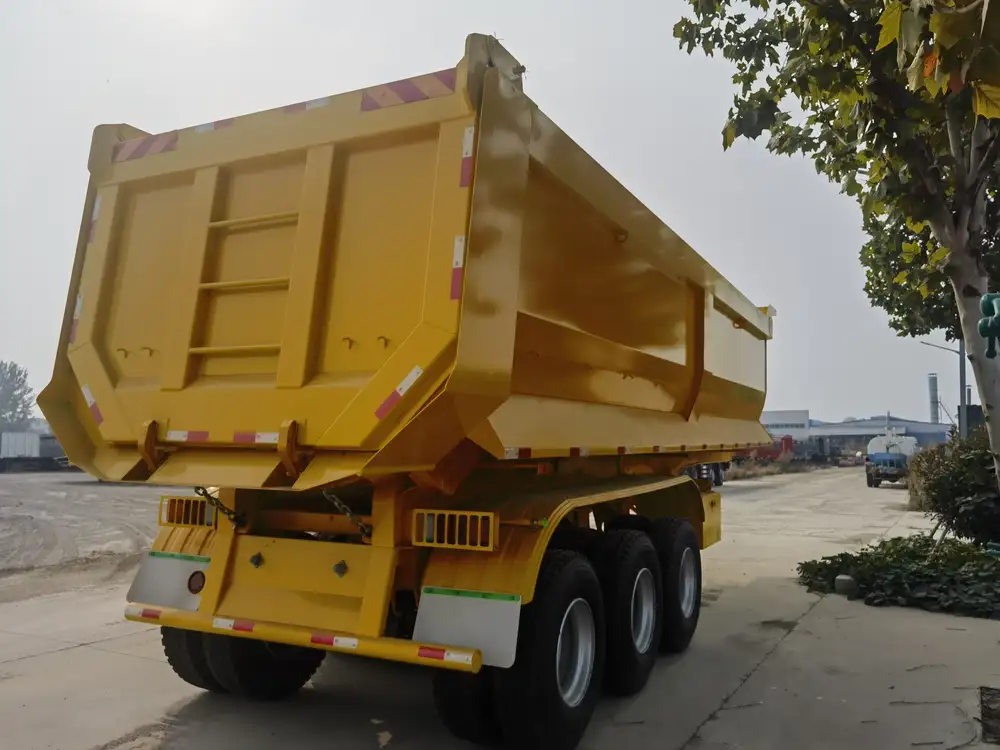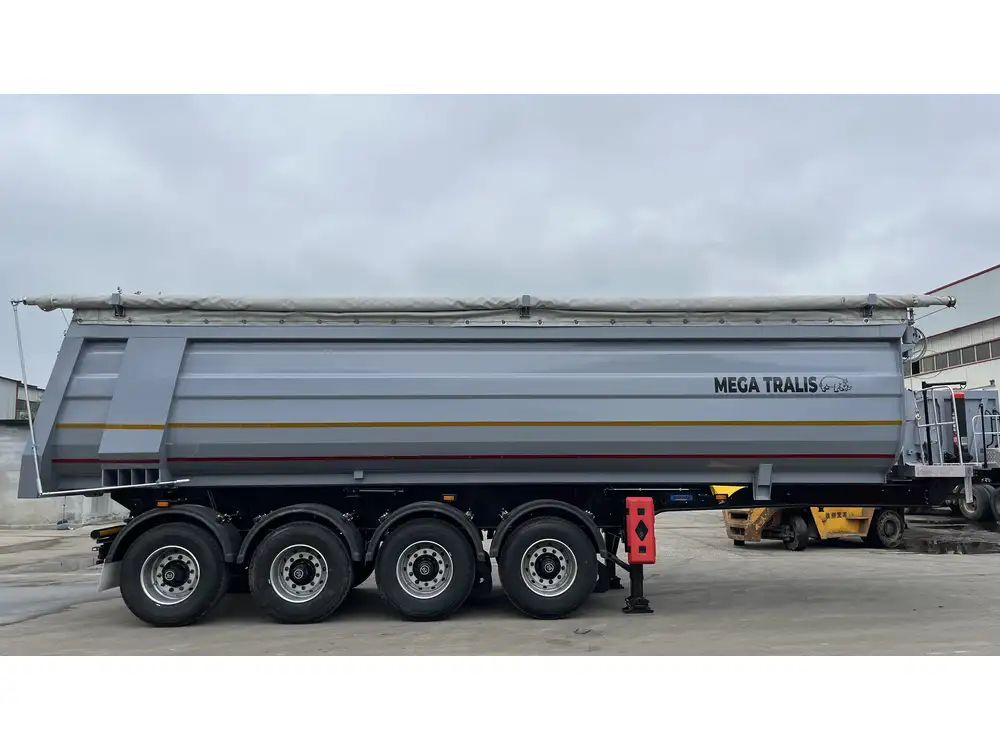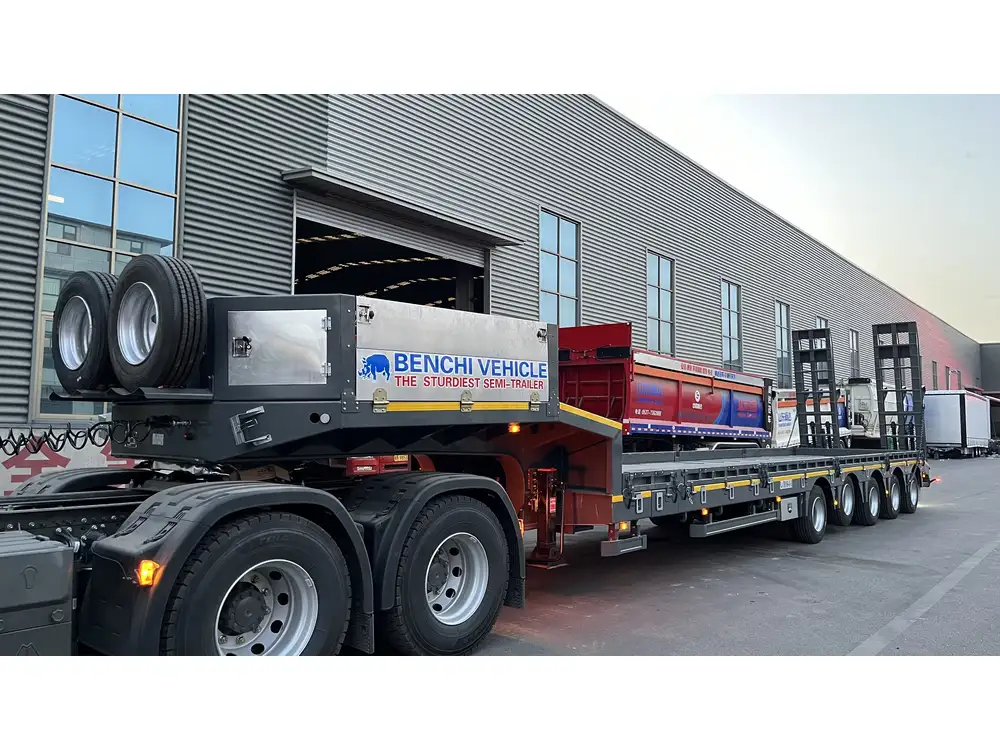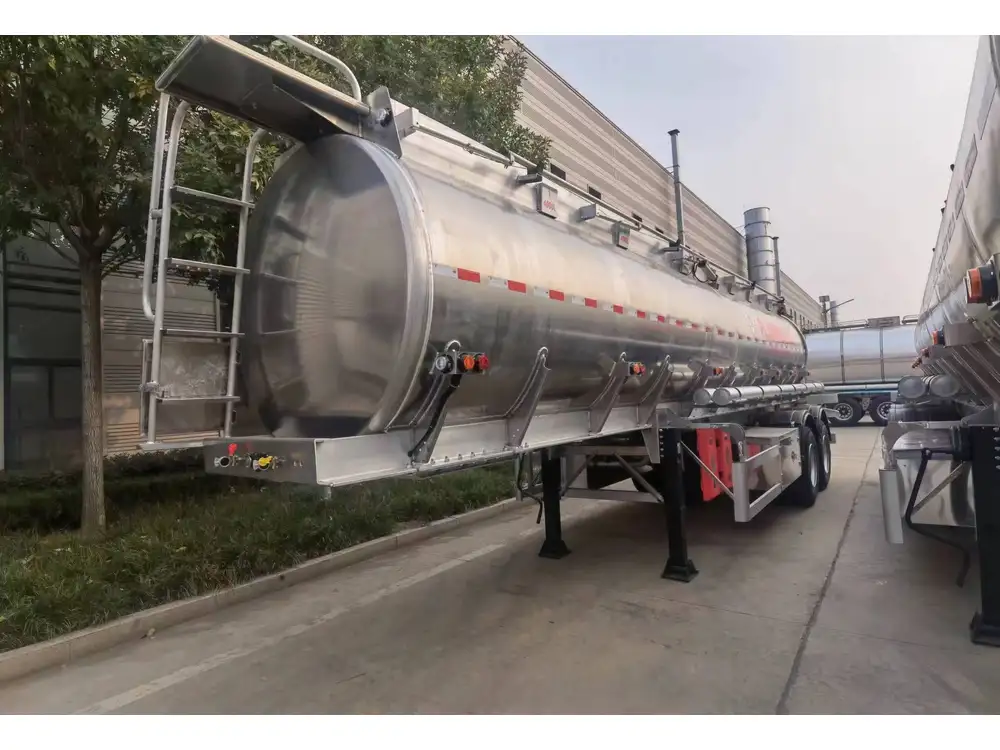In the realm of heavy-duty transportation, the braking system stands as one of the most critical safety features. As a semi-trailer manufacturer, it is paramount to understand intricately how braking systems function within these colossal vehicles. This article delves into a key aspect: the differentiation between semi truck brakes and trailer brakes, uncovering the specific mechanics involved, safety implications, and the best practices for maintenance.
Table of Contents
- Introduction to Braking Systems in Semi-Trucks
- The Structure of Semi-Truck Brake Systems
- 2.1. Types of Brakes Used in Semi-Trucks
- 2.2. How Semi-Truck Brakes Operate
- Understanding Trailer Brake Systems
- 3.1. Types of Trailer Brakes
- 3.2. Operating Principles of Trailer Brakes
- Key Differences Between Semi-Truck and Trailer Braking Systems
- Safety Implications of Brake System Separation
- Maintenance Considerations for Optimal Performance
- Conclusion
1. Introduction to Braking Systems in Semi-Trucks
The safe operation of a semi-truck hinges significantly on its braking system. With the enormous weight of cargo that these vehicles typically haul, the demand on braking forces increases exceptionally. Understanding whether semi truck brakes are separate from trailer brakes unveils insights into safety, maintenance, and operational efficiency.

2. The Structure of Semi-Truck Brake Systems
2.1. Types of Brakes Used in Semi-Trucks
Semi-trucks predominantly utilize two types of brake systems: drum brakes and disc brakes. Each has its unique characteristics:
| Brake Type | Advantages | Disadvantages |
|---|---|---|
| Drum Brakes | – Cost-effective | – Heavier and less efficient cooling |
| – Superior fade resistance | – More complex maintenance | |
| Disc Brakes | – Better heat dissipation | – Higher cost |
| – More responsive brake application | – Prone to wear from environmental factors |
2.2. How Semi-Truck Brakes Operate
The operation of semi-truck brakes hinges on an air brake system where compressed air is used to activate the brakes. The air is stored in tanks and, upon pressing the brake pedal, it releases air into chambers that push brake shoes against drums. This mechanism provides the vehicle with the necessary stopping power, ensuring safety even under challenging conditions.

3. Understanding Trailer Brake Systems
3.1. Types of Trailer Brakes
Trailer brakes come in several configurations. The most common types found in trailers include:
- Electric Brakes: These brakes use an electric current to engage the brake shoes.
- Surge Brakes: These are hydraulic brakes activated by the trailer’s forward momentum when braking occurs.
| Brake Type | Activation Mechanism | Common Usage |
|---|---|---|
| Electric Brakes | Current from the tow vehicle | Light to moderate trailers |
| Surge Brakes | Forward momentum causing hydraulic press | Heavy trailers and boats |
3.2. Operating Principles of Trailer Brakes
Electric brakes operate based on the flow of electricity from the tow vehicle. When the brake light is activated, a current flows to the brakes, causing them to engage. In contrast, surge brakes utilize a system where the forward motion of the trailer compresses a hydraulic cylinder, activating the brakes without relying on electrical connections.

4. Key Differences Between Semi-Truck and Trailer Braking Systems
The distinction between semi truck brakes and trailer brakes is pivotal for both operation and regulatory compliance. Here are the primary differences:
- Activation Method: Semi-trailers typically operate under a pneumatic system whereas trailers can function with mechanical or electric systems.
- Control: The braking of the truck and trailer can be controlled independently, allowing for adjustments depending on cargo load and road conditions.
- Brake Force Distribution: In a semi-trailer setup, the braking force is distributed between the truck and trailer based on the load, which is not the case with most trailer systems.
| Aspect | Semi Truck Brakes | Trailer Brakes |
|---|---|---|
| Activation Method | Air brake system | Electric or Surge Mechanisms |
| Control | Independent pneumatic control | Dependent on vehicle braking |
| Brake Force Distribution | Load-dependent | Generally fixed with variations |
5. Safety Implications of Brake System Separation
Having separate braking systems for semi trucks and trailers is not merely a design choice; it significantly enhances safety. Here are several safety advantages:
- Controlled Stopping: The ability to manage each system independently allows for smoother and controlled stops, especially on downhill gradients where inertia plays a critical role.
- Reduced Risk of Jackknifing: Properly functioning separate brake systems minimize the risk of jackknifing accidents, an occurrence common when trailer brakes engage too suddenly or unexpectedly.
- Emergency Response: In the event one system fails, the other can still operate, providing a vital backup that can prevent catastrophic failures.
6. Maintenance Considerations for Optimal Performance
Regular inspection and maintenance are crucial for both types of brake systems. This not only ensures compliance with safety regulations but also guarantees efficient operations.

6.1. Checklist for Semi Truck Brake Maintenance
Air Brake Inspection:
- Check air compressor functionality.
- Inspect air lines and fittings for leaks.
- Ensure the proper functioning of air tanks.
Brake Pads and Rotors:
- Inspect wear on pads and discs.
- Replace as necessary to maintain optimal stopping power.
Regular Testing:
- Conduct brake tests in various conditions to assess effectiveness.
- Use diagnostic tools to monitor air pressure levels.
6.2. Trailer Brake Maintenance
Electric Brake System:
- Inspect wiring for insulation damage.
- Ensure adequate power supply to electric brakes.
- Test brake controller functionality.
Surge Brake System:
- Check hydraulic lines for leaks.
- Verify that surge couplers function smoothly.
- Test brakes under load to assess performance.
6.3. General Best Practices
- Regularly perform a comprehensive system check on both truck and trailer.
- Keep records of maintenance for compliance and operational transparency.
- Train drivers on the specifics of braking systems for better handling.

7. Conclusion
Navigating the dynamics of semi truck brakes versus trailer brakes unveils the intricate safety mechanisms crucial for heavy-duty transport. From understanding the types of braking systems, their operational principles, to the stark differences between them, this knowledge empowers manufacturers and operators alike to ensure the highest safety standards and performance levels. By marrying engineering prowess with meticulous maintenance, the transportation industry can continue to thrive while keeping safety as a paramount priority.
In our commitment to safety and efficiency, we ensure that we manufacture semi-trailers equipped with state-of-the-art braking systems tailored to differentiate between the dynamics of truck and trailer braking. This approach not only enhances operational efficiency but also fortifies safety measures on our highways, keeping everyone on the road safe.



